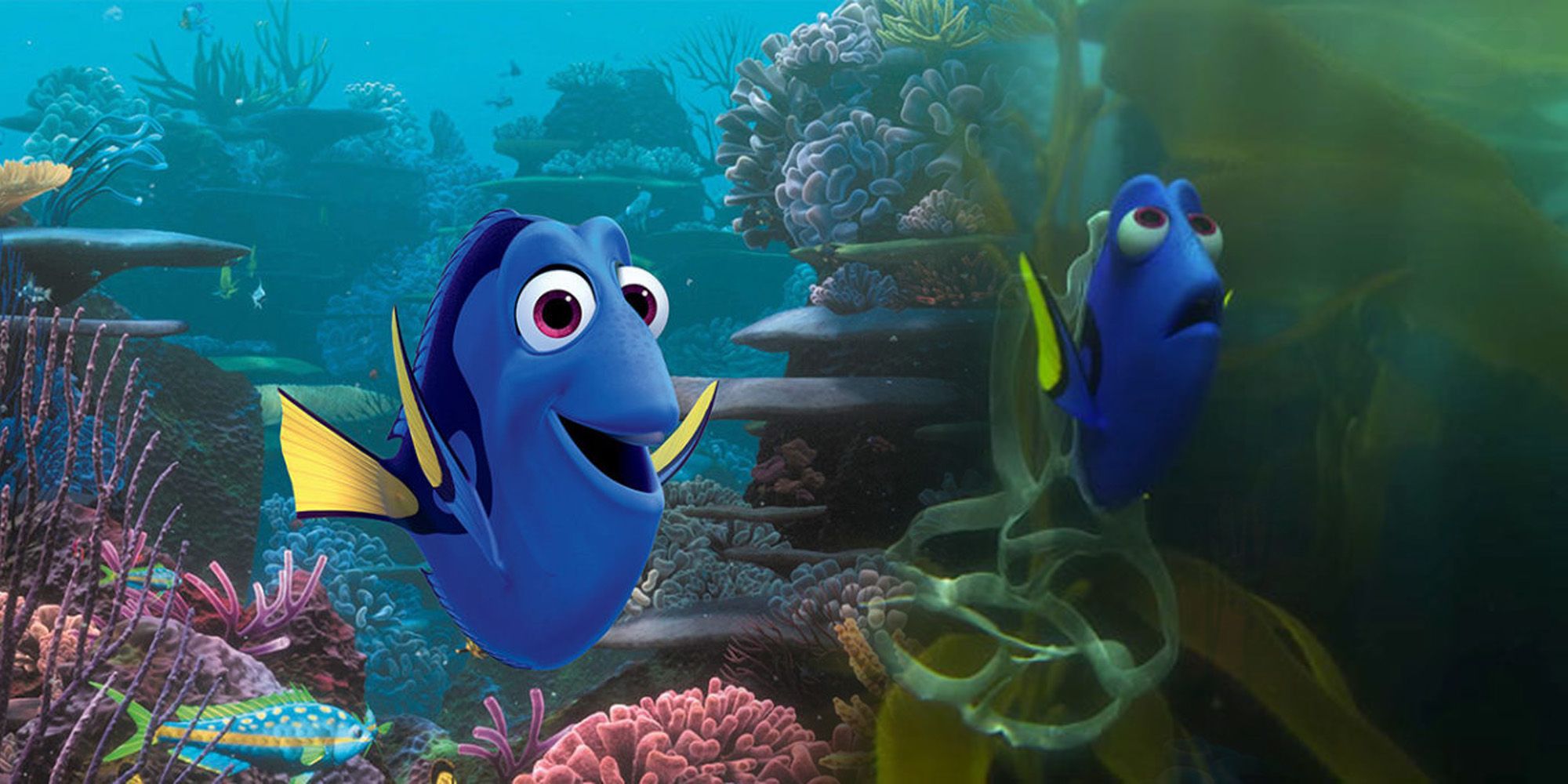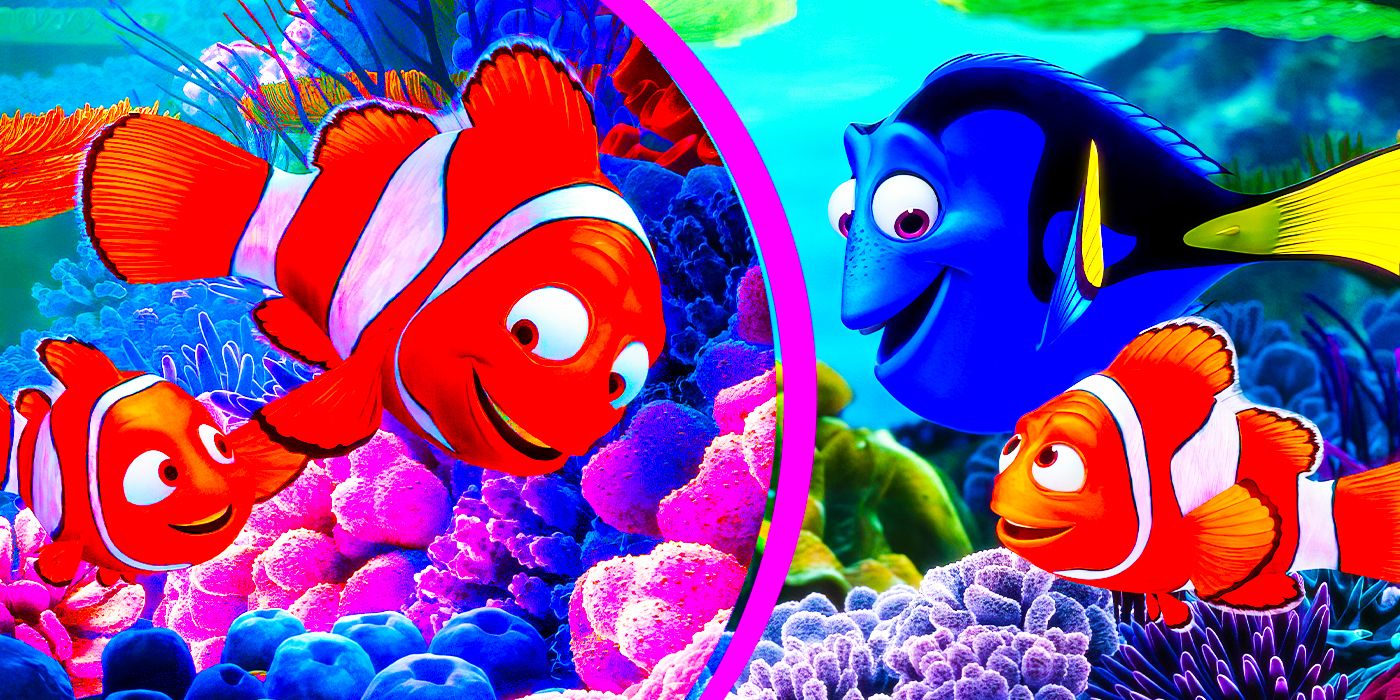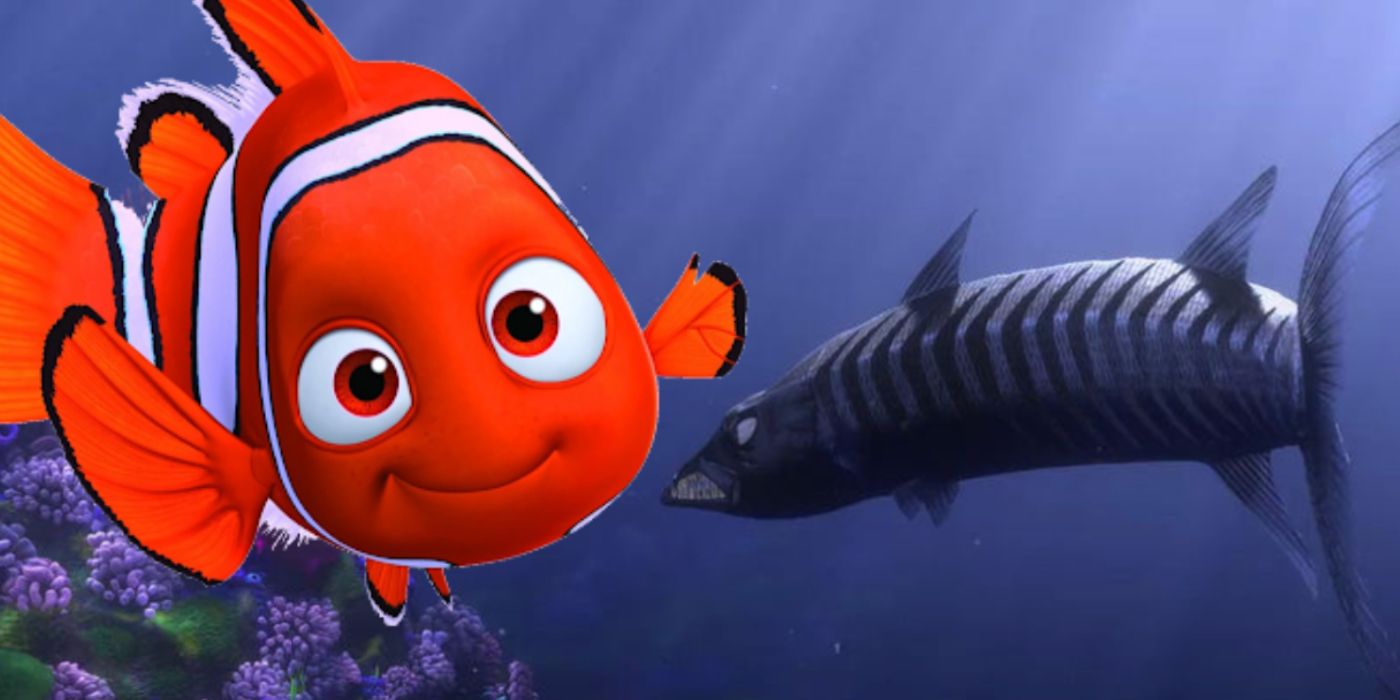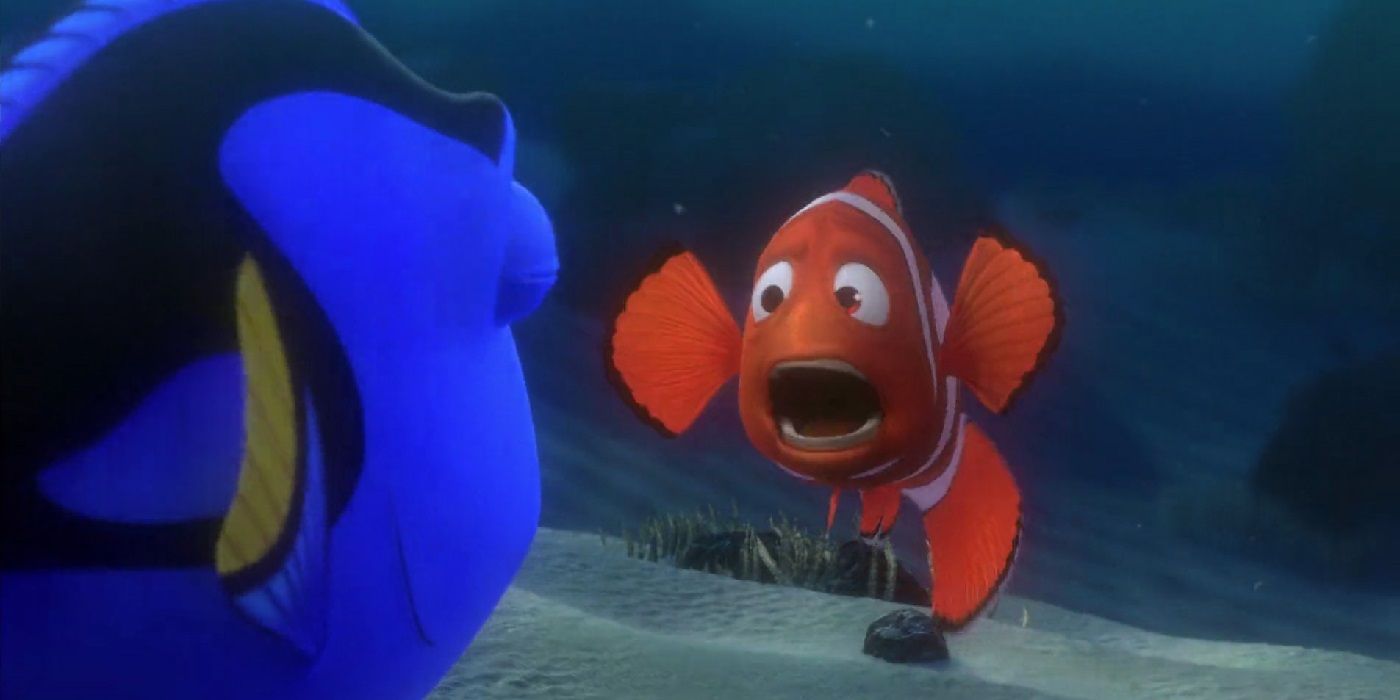Summary
- Marlin lost his whole family in a barracuda attack, shaping his journey to find Nemo in
Finding Nemo
. - The movie’s dark themes may suggest that Nemo never existed, and was in fact a coping mechanism for Marlin’s grief and loss.
-
Finding Nemo
may symbolize the five stages of grief, with Marlin navigating denial, anger, bargaining, despair, and acceptance.
Some viewers believe there is a dark Finding Nemo meaning behind the plot of the 2003 Pixar movie. Directed by Andrew Stanton, the story features Marlin the clownfish embarking on a journey to locate his missing son, Nemo. Though Finding Nemo was a hit with viewers of all ages, the truth in Marlin’s search for Nemo may have been bleaker than initially thought. There was one popular belief suggesting Dory had short-term memory loss due to watching her family die. That didn’t turn out to be the case based on the events of Finding Dory.
Aside from the Pixar Shared Universe Theory, which connects all existing Pixar installments into one combined world, there are several other notable Finding Nemo theories and the situation surrounding Dory wasn’t the only grim theory to surround a core character. Another dark Pixar theory suggests the animated film is meant to showcase the tragic loss in the eyes of a husband and father. More specifically, the theory posits that Nemo never existed in Finding Nemo, and instead was a figment of Marlin’s imagination.

Related
Pixar’s New Finding Nemo Spinoff Has The Franchise’s Darkest Message Yet
Pixar Popcorn, a series of Pixar shorts on Disney+, includes “Dory Finding,” a Finding Nemo short that secretly sends a dark message about the ocean.
Marlin Lost His Whole Family In The Barracuda Attack
The Finding Nemo Theory Suggests Marlin Was The Only Survivor
The particular Finding Nemo meaning presents the idea that Marlin the clownfish truly lost his wife and soon-to-be children to a barracuda attack. However, where the plot deviates is the notion that one fish egg survived before becoming Nemo in the primary timeline. Instead, there’s a belief highlighted in the theory that Marlin made up Nemo after all the eggs were destroyed as a way to cope with the tragic loss of his family before meeting Dory, a fish with memory loss.
The rescue mission helps Marlin learn what it means to be the best father he can be to Nemo despite his loss.
In Finding Nemo, Marlin showcased himself as a very overprotective father who would go to great lengths for his family. Granted, his journey in finding his “missing son” may have been part of the coping mechanism to overcome his loss, according to the theory. There’s also a thought the journey gave Marlin a way to work through his insecurities while learning important life lessons from those he met during his journey.
While the theory suggesting Nemo never existed is an interesting one, it seems a bit bleak for Pixar. Although the studio doesn’t shy away from death and loss, the movie wouldn’t have focused on sequences told from Nemo’s point of view if he never existed. The pair also wouldn’t have fit into the Finding Dory sequel if Nemo wasn’t a true piece of the story.
Even though the theory doesn’t have strong legs to stand on, some of the basis for Marlin’s journey in Finding Nemo remains true. The rescue mission helps Marlin learn what it means to be the best father he can be to Nemo despite his loss.

Related
Finding Nemo Ending Explained
The 2003 Pixar animated movie Finding Nemo documents the lengths that a father will go to to find his son – what happens at the end of the film?
How Finding Nemo Could Be About The 5 Stages Of Grief
The Finding Nemo Meaning May Be The Importance Of Accepting Great Loss
This theory feeds directly into another dark Finding Nemo meaning — that the movie is about the five stages of grief. Even though it’s being rethought these days, for the longest time, the psychological consensus was that grief is experienced in five stages: denial, anger, bargaining, despair, and acceptance. Denial happens when he chases the “butt” Nemo touched, yelling “no, no, no, no!” at the open air when he pokes his head above the waves, trying to see where the boat went.
Marlin braves all stages of grief throughout
Finding Nemo.
Anger comes when he loses his temper with the Dory, and Marlin bargains with multiple sea creatures throughout his ordeal. His despair is palpable during Finding Nemo, but his dejected acceptance comes as he gives up and decides to go home (right before Dory tracks him down to let him know she’d found Nemo at last). Marlin braves all stages of grief throughout Finding Nemo, even if the Pixar movie isn’t directly about the mourning process.

Related
How Toy Story 4 Served Justice With Finding Nemo’s Barracuda Easter Egg
Toy Story 4 features a clever Easter egg with the barracuda who killed Nemo’s mom in Finding Nemo – stuffed and mounted in an antique shop.
The way Marlin brought up Nemo also parallels this. His denial when he won’t allow Nemo to go to school, his anger when Nemo swims too far, and his bargaining when he tries to coax him back all fit the theory that Finding Nemo is dark and very smartly veiled in its exploration of the five stages of grief and mourning. Nemo being a figment of Marlin’s subconscious makes this all the more believable, with the absent-minded Dory also possibly representing Marlin’s consciousness as it guides him through the process.
Clownfish can change sex if their mating partner dies, so all the female pronoun dialogue aimed at Dory from others could have been addressed to Marlin. While this is purely a bit of speculative fun and not true, it does still prove just how deep Pixar’s underwater adventure Finding Nemo meaning actually is, as none of these theories require a lot of mental gymnastics to explain.
This Might Not Even Be The Darkest Pixar Theory
The Apocalypse Features In Many Pixar fan Theories
There are a lot of theories about the connections between the Pixar movies, but some Pixar theories, like Nemo not being real, are incredibly dark for a kids’ movie. Another particularly dark theory concerning Pixar is that most of the movies actually take place in an apocalyptic setting.
The idea is that humans have caused their own downfall, much like in WALL-E. The argument has been made that cars have evolved because humans have died out, for example, and it has been confirmed that humans once existed in the Cars universe.
Of course, another particularly dark theory is that WALL-E causes the downfall of the planet, not humans. The idea is that the titular robot actually caused the destruction of Earth by systematically wiping out the other cleaner bots, which is why the audience sees him cannibalizing his “siblings” for parts at the start of the movie. It’s WALL-E who prevented the other robots from doing their jobs, causing himself to be alone on the planet.
Another theory, with a more human element, is that Up, which is already regarded as one of the biggest Pixar tear-jerkers, is even sadder than audiences know. The idea is that Carl’s journey with his house of balloons isn’t just an adventure to honor Ellie, but his last adventure – into the afterlife. Russell is meant to be a trainee guardian angel of sorts, earning his final badge to become a full-fledged angel by helping Carl reach his life-after-death.
That’s something of a bittersweet Pixar theory compared to that of Nemo not existing in Finding Nemo.
Finding Nemo
- Director
- Andrew Stanton , Lee Unkrich
- Release Date
- May 30, 2003
- Writers
- Andrew Stanton , Bob Peterson , David Reynolds
- Cast
- Albert Brooks , Ellen DeGeneres , Alexander Gould , Willem Dafoe , Brad Garrett , Allison Janney
